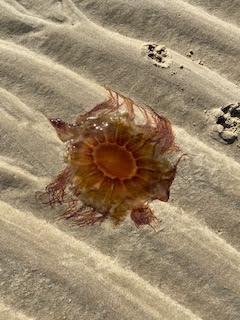What is our theme?
Ocean - counting
What is the lesson (overall Purpose):
The Massachusetts pre-k standards apply to children who are at the end of the preschool age group, meaning older four- and younger five-year olds. In preschool or pre-kindergarten, activity time should focus on two critical areas:
(1) developing an understanding of whole numbers to 10, including concepts of one-to-one correspondence, counting, cardinality (the number of items in a set), and comparison; and
(2) recognizing two-dimensional shapes, describing spatial relationships, and sorting and classifying objects by one or more attributes. Relatively more learning time should be devoted to developing children’s sense of number as quantity than to other mathematics topics.
MA Guidelines/Standards:
PK.CC.2. Recognize and name written numerals 0–10.
PK.CC.3. Understand the relationships between numerals and quantities up to ten.
Learning Outcomes:
Songs,Books,Video(Motivational Techniques)
https://www.youtube.com/watch?v=UD9JCO7RIs0 - Ms. Julia Reading a Book
https://www.youtube.com/watch?v=u9Q9knJlhww - Informational Video
https://www.youtube.com/watch?v=vqJR-YkV5ko - Book
Materials
Paper Plate Jellyfish
Paper Counting Jellyfish
Activity(Procedure)
Paper Plate Jellyfish
Paper Counting Jellyfish
Activity(wrap up)
How high can you count? Can you match the beads to the number?
How do I know what my child is learning?(Assessment)
How can you extend the activity (modifications)
See materials and procedure above
Helpful Hints (pitfalls and solutions)
See materials and procedure above
Ocean - counting
What is the lesson (overall Purpose):
The Massachusetts pre-k standards apply to children who are at the end of the preschool age group, meaning older four- and younger five-year olds. In preschool or pre-kindergarten, activity time should focus on two critical areas:
(1) developing an understanding of whole numbers to 10, including concepts of one-to-one correspondence, counting, cardinality (the number of items in a set), and comparison; and
(2) recognizing two-dimensional shapes, describing spatial relationships, and sorting and classifying objects by one or more attributes. Relatively more learning time should be devoted to developing children’s sense of number as quantity than to other mathematics topics.
MA Guidelines/Standards:
PK.CC.2. Recognize and name written numerals 0–10.
PK.CC.3. Understand the relationships between numerals and quantities up to ten.
Learning Outcomes:
- name or identify (point to) numerals spontaneously or when prompted.
- follow visual or rebus recipes (e.g., for making play dough or cookies).
- discriminate letters from numerals during activities and learning centers.
Songs,Books,Video(Motivational Techniques)
https://www.youtube.com/watch?v=UD9JCO7RIs0 - Ms. Julia Reading a Book
https://www.youtube.com/watch?v=u9Q9knJlhww - Informational Video
https://www.youtube.com/watch?v=vqJR-YkV5ko - Book
Materials
Paper Plate Jellyfish
- Paper plate
- Coloring tools
- Tentacles - ribbon, string, rope, old shoe lace, etc.
- Googly eyes and/or marker to draw eyes
- Paint - if you would like to paint it!
- Tape
Paper Counting Jellyfish
- Paper
- Scissors
- String
- Beads
- Coloring tools
Activity(Procedure)
Paper Plate Jellyfish
- Gather materials
- Paint/color/decorate your bowl (the body of the jellyfish)
- Make a hole, or tape the ribbon.string to the inside of the bowl
- Draw some eyes on it
- Hang it somewhere in your house so you can see!
Paper Counting Jellyfish
- Gather materials
- Cut a half circle
- Cut 8 holes on the horizontal part of the half circle
- Number each hole 1-8
- Tie ribbon/sting to the holes
- Put the correct number of tentacle (beads) on each labeled string
- Enjoy counting each tentacle (beads) on the stings!
Activity(wrap up)
How high can you count? Can you match the beads to the number?
How do I know what my child is learning?(Assessment)
- count concrete objects for a meaningful purpose (e.g., three crackers for snack; two eyes to glue on the bunny; three steps down to the playground).
How can you extend the activity (modifications)
See materials and procedure above
Helpful Hints (pitfalls and solutions)
See materials and procedure above



 RSS Feed
RSS Feed
